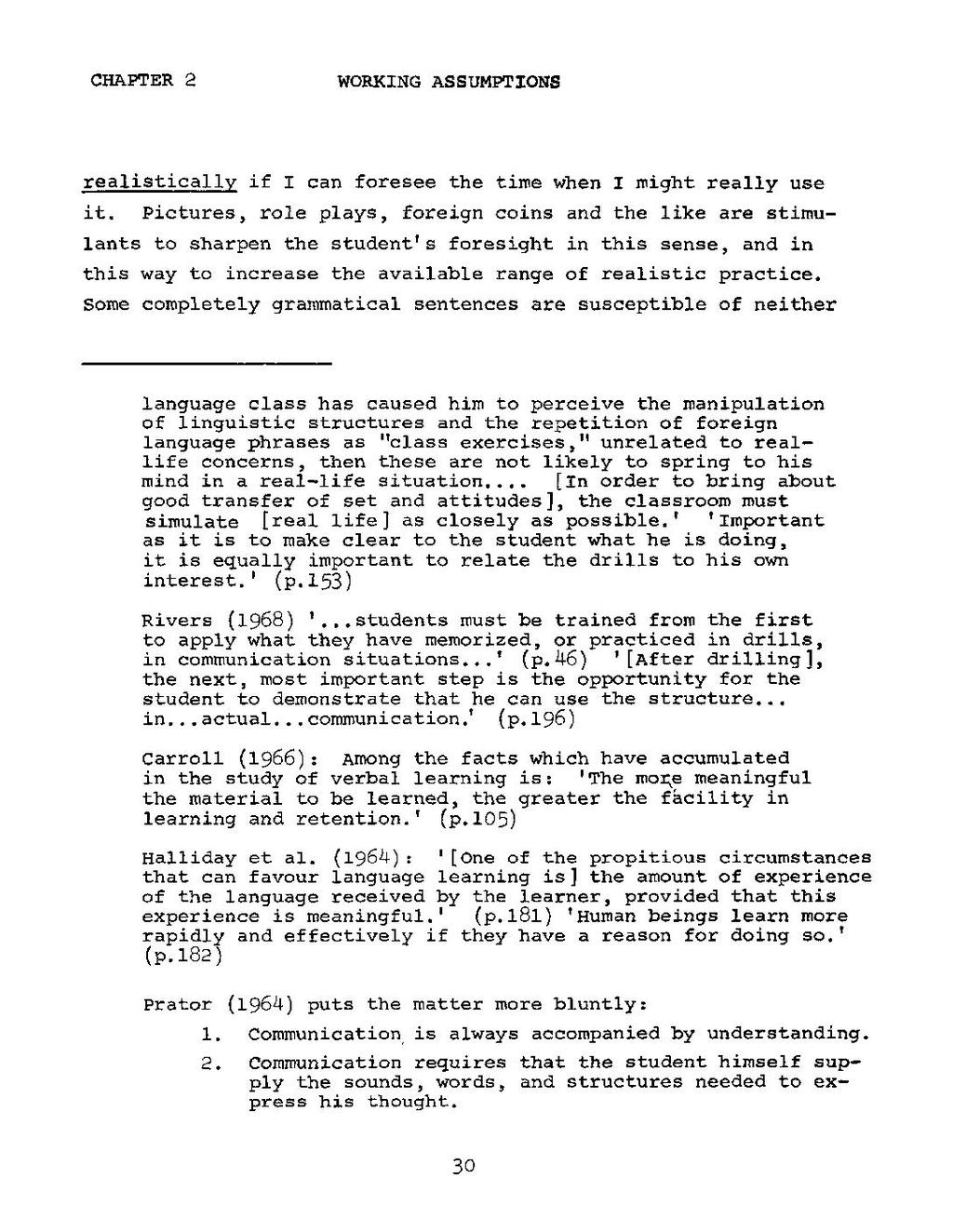realistically if I can foresee the time when I might really use it.
Pictures, role plays, foreign coins and the like are stimulants to sharpen the student's foresight in this sense, and in this way to increase the available range of realistic practice. Some completely grammatical sentences are susceptible of neither
- Communication; is always accompanied by understanding.
- Communication requires that the student himself supply the sounds, words, and structures needed to express his thought.
language class has caused him to perceive the manipulation of linguistic structures and the repetition of foreign language phrases as "class exercises," unrelated to reallife concerns, then these are not likely to spring to his mind in a real-life situation… [In order to bring about good transfer of set and attitudes], the classroom must simulate [real life] as closely as possible.' 'Important as it is to make clear to the student what he is doing, it is equally important to relate the drills to his own interest.' (p.153)
Rivers (1968) '…students must be trained from the first to apply what they have memorized, or practiced in drills, in communication situations…' (p.46) '[After drilling], the next, most important step is the opportunity for the student to demonstrate that he can use the structure…in…actual…communication.' (p.l96) Carroll (1966): Among the facts which have accumulated in the study of verbal learning is: 'The more meaningful the material to be learned, the greater the facility in learning and retention.' (p.105)Halliday et ale (1964): '[One of the propitious circumstances that can favour language learning is] the amount of experienceof the language received by the learner, provided that this experience is meaningful.' (p.l8l) 'Human beings learn more rapidly and effectively if they have a reason for doing so.'(p.182)
Prator (1964) puts the matter more bluntly:
30
